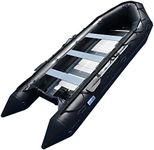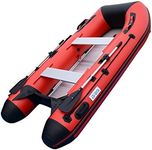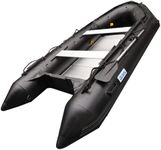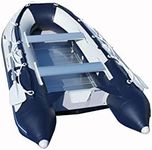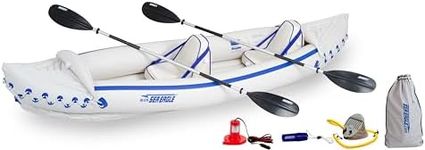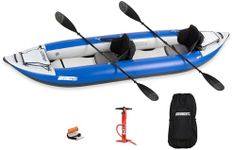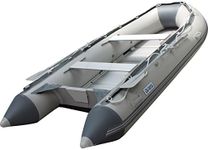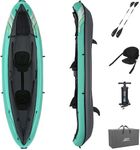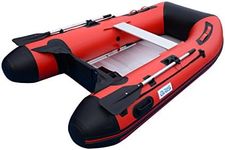Buying Guide for the Best Inflatable Boats
Choosing the right inflatable boat can make your time on the water safer, more enjoyable, and better suited to your needs. Before you buy, think about how you plan to use the boat—whether for fishing, recreation, short trips, or as a tender for a larger vessel. Consider how many people or how much gear you’ll need to carry, where you’ll be boating (calm lakes, rivers, or open sea), and how you’ll transport and store the boat when not in use. Understanding the key features will help you find a boat that matches your lifestyle and expectations.MaterialThe material of an inflatable boat determines its durability, weight, and resistance to elements like sun and saltwater. The most common materials are PVC and Hypalon. PVC is lightweight and affordable, making it suitable for occasional use and easy transport, but it may degrade faster in harsh sunlight or saltwater. Hypalon is heavier and more expensive but offers superior resistance to UV rays, chemicals, and abrasion, making it ideal for frequent or long-term use. If you plan to use your boat often or in challenging environments, Hypalon is a better choice, while PVC works well for casual, infrequent outings.
Size and CapacitySize and capacity refer to the boat’s length, width, and the number of people or weight it can safely carry. Smaller boats (under 8 feet) are easy to handle and store, perfect for solo trips or as tenders. Medium boats (8-12 feet) can carry two to four people and some gear, making them versatile for families or small groups. Larger boats (over 12 feet) offer more space and stability, suitable for bigger groups or carrying lots of equipment. Choose a size that matches your typical group size and intended activities, but always consider the maximum weight limit for safety.
Floor TypeThe floor type affects comfort, stability, and how you use the boat. There are three main types: slatted, air deck, and rigid (aluminum or plywood) floors. Slatted floors are lightweight and easy to roll up, but less stable for standing. Air decks are inflatable, providing a good balance of comfort and portability, and are suitable for most recreational uses. Rigid floors offer the best stability and support, ideal for fishing or carrying heavy loads, but they add weight and take more time to assemble. Pick a floor type based on whether you need portability or plan to stand and move around a lot.
ChambersChambers are separate air compartments within the boat. More chambers mean better safety—if one chamber gets punctured, the others keep the boat afloat. Most inflatable boats have two to four chambers. Boats with more chambers are safer, especially for open water or longer trips, while fewer chambers are acceptable for short, close-to-shore outings. If safety is a top concern or you’ll be far from help, choose a boat with more chambers.
Transom TypeThe transom is the back part of the boat where you can mount a motor. Some inflatable boats have a solid transom for attaching an outboard motor, while others have no transom and are meant for paddling only. If you want to use a motor for faster travel or covering longer distances, make sure the boat has a sturdy transom and check the maximum motor size it can handle. For simple rowing or short trips, a boat without a transom is lighter and easier to manage.
Portability and StoragePortability and storage refer to how easy it is to transport and store the boat when not in use. Lighter, smaller boats with fewer rigid parts are easier to pack into a car trunk or closet. Heavier boats with rigid floors or larger sizes may require more storage space and effort to move. If you have limited storage or need to carry the boat by yourself, look for models that are easy to deflate, fold, and carry.
